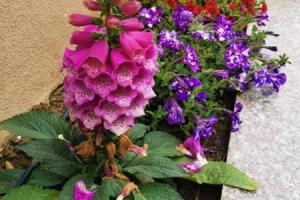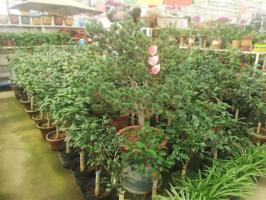How to Care for Potted Spider Plants
Spider plants are among the easiest indoor plants to care for. They're known for their long, graceful leaves and their ability to thrive in a variety of conditions. If you're looking for a low-maintenance houseplant that can even help purify the air in your home, a spider plant may be just what you need. Here are some tips for keeping your potted spider plant healthy and happy:
Light
Spider plants do best in bright, indirect light. They can tolerate some direct sunlight, but too much can scorch their leaves. If your spider plant starts to look a little pale or yellow, it may be getting too much sun. Keep it in a bright but shady spot, like near a window with sheer curtains.
Water
Spider plants like to be kept consistently moist, but not waterlogged. The top inch of soil should feel slightly damp to the touch before you water your plant. Water your spider plant deeply, until water starts to drain out of the bottom of the pot. Be sure to empty any excess water from the saucer underneath the pot to prevent root rot.
Humidity
Spider plants thrive in humid environments, but they can also tolerate drier air. If your home is particularly dry, you can raise the humidity around your spider plant by misting it with a spray bottle or placing a small humidifier nearby.
Fertilizer
Spider plants don't require much fertilizer, but a little bit can help them grow fuller and healthier. You can fertilize your spider plant once a month during the growing season (spring and summer) with a balanced, water-soluble fertilizer. Be sure to follow the instructions on the fertilizer packaging and don't over-fertilize, as this can burn the plant's roots.
Propagation
Spider plants are easy to propagate from the plantlets that grow on their long, dangling stems. Once these plantlets have developed roots, you can cut them off and pot them up in their own containers. Spider plants are also easy to share with friends and family, as these plantlets make great gifts.
Common Problems
If you notice brown tips or edges on your spider plant's leaves, this may be a sign that it's not getting enough water or humidity. If the leaves start to yellow, it may be getting too much sun. Spider plants can also be susceptible to spider mites and mealybugs, which can be treated with insecticidal soap or neem oil.
With these simple care tips, your potted spider plant should be thriving in no time. Enjoy the beauty and ease of this classic houseplant!

 how many times do yo...
how many times do yo... how many planted tre...
how many planted tre... how many pine trees ...
how many pine trees ... how many pecan trees...
how many pecan trees... how many plants comp...
how many plants comp... how many plants can ...
how many plants can ... how many plants and ...
how many plants and ... how many pepper plan...
how many pepper plan...






























